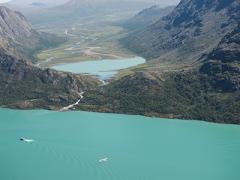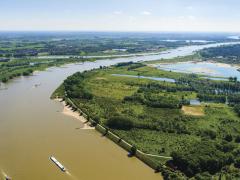The global potential for land restoration: Scenarios for the Global Land Outlook 2
Land restoration has the potential to deliver multiple environmental and societal benefits simultaneously, making it a highly integrated solution for sustainable development. This study quantifies the potential effects of land restoration for soil, food, water, biodiversity and climate change at the global and regional levels, using three global land-use scenarios up to 2050.

Land restoration: multiple benefits
Land restoration has the potential to deliver multiple benefits simultaneously, making it a highly integrated solution for sustainable development. The way that land is used, managed and protected is central to achieving the goals of the UN Conventions on land degradation and desertification, climate change and biodiversity, as well as many of the Sustainable Development Goals. This is because the choices, synergies and trade-offs between sustainability ambitions often materialise on land. Over the past years, attention to and ambitions for restoration have gained momentum, culminating in the UN Decade on Ecosystem Restoration (2021–2030).
Potential effects: scenarios
This study quantifies the potential effects of land restoration at the global and regional levels. Three global land-use scenarios up to 2050 were constructed and analysed to provide a view of the extent and risks of land degradation, and to estimate the potential of land restoration compared to a future without restoration. These three scenarios are the Baseline, Restoration and Restoration & Protection scenarios. The effects of land restoration were assessed for natural area, biodiversity, soil organic carbon, agricultural yields, water regulation and carbon storage.
Restoration commitments
Current global restoration commitments cover around one fifth of the potential area that can be restored in scenarios. Implementation of these commitments costs an estimated 300 to 1600 billion US$. The stimulation of land restoration measures requires countries to integrate restoration into existing policies and institutions. Land restoration and protection measures provide an important part of the solutions to realise internationally agreed goals, but need to be combined with changes to production, supply chains and consumption patterns to bring these goals within reach.
Global Land Outlook 2
This PBL study on global restoration scenarios was carried out at the request of the United Nations Convention to Combat Desertification (UNCCD), which was established to combat land degradation, desertification and drought. The Convention addresses the improvement of living conditions of people in drylands and the restoration of degraded land and soils. This PBL study is a central component of the Global Land Outlook, 2nd edition.
Nature-based Solutions and Scenario website
This report also features in the Nature-based Solutions and Scenario website. This website informs decision-makers about the potential of nature-based solutions in addressing global sustainability challenges. By linking potential global pathways to 2050, solutions and inspiring cases, this website showcases how global sustainability goals can be connected to local level actions that help to not only conserve and restore nature but also build back better and greener in an uncertain world.
On 16 February 2022, we corrected a few percentages on page 11 of the current version of the report 'The global potential for land restoration: Scenario's for the Global Land Outlook 2'.
- Rapport | 3 November 2020To report Goals and commitments for the restoration decade
- Publicatie | 1 August 2017To report Exploring future changes in land use and land condition (Global Land Outlook 2017)
- Publicatie | 4 June 2021To UNDP report Future perspectives on land for eastern Africa
- LinkTo website United Nations Convention to Combat Desertification (UNCCD)
- LinkTo the research article 'Understanding land-use change conflict: a systematic review of case studies', in Land Use Science
- LinkTo the research article 'The global cost of international commitments on land restoration', in Land Degradation & Development
- LinkTo the research article 'Socioeconomic impacts of land restoration in agriculture: A systematic review', in Open
Authors
Specifications
- Publication title
- The global potential for land restoration: Scenarios for the Global Land Outlook 2
- Publication date
- 4 June 2021
- Publication type
- Report
- Page count
- 20
- Publication language
- English
- Product number
- 3898




